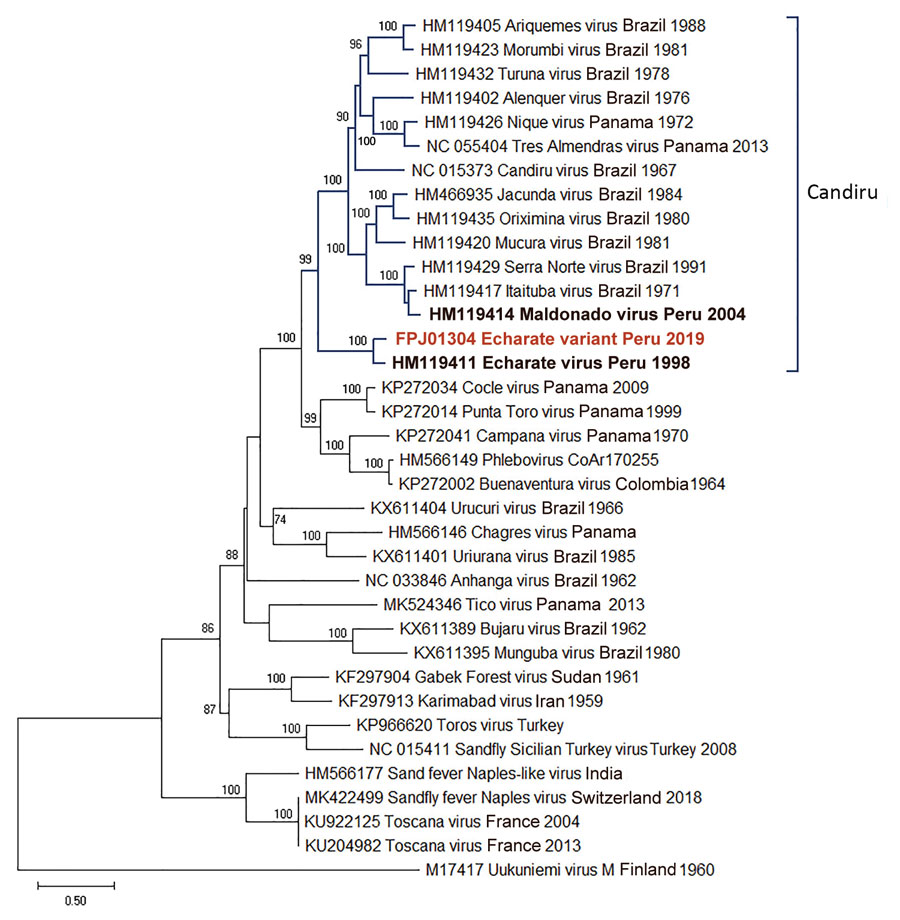Volume 29, Number 9—September 2023
Dispatch
Novel Echarate Virus Variant Isolated from Patient with Febrile Illness, Chanchamayo, Peru
Figure 2

Figure 2. Maximum-likelihood phylogenetic tree based on 36 amino acid sequences of phleboviruses M segment (NSm–Gn) in study of novel Echarate virus variant isolated from patient with febrile illness, Chanchamayo, Peru. Strains from Peru are in bold, and the novel variant is in red. Only bootstrap values >70% are shown at key nodes. Uukuniemi virus was considered as the outgroup. Scale bar indicates nucleotide substitutions per site.
Page created: July 19, 2023
Page updated: August 20, 2023
Page reviewed: August 20, 2023
The conclusions, findings, and opinions expressed by authors contributing to this journal do not necessarily reflect the official position of the U.S. Department of Health and Human Services, the Public Health Service, the Centers for Disease Control and Prevention, or the authors' affiliated institutions. Use of trade names is for identification only and does not imply endorsement by any of the groups named above.